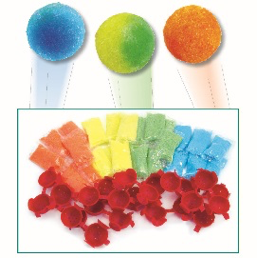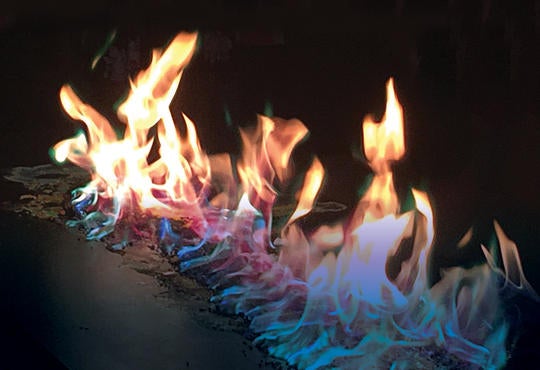[The puzzle reprint on the next page is from the February 1994 issue of Chem 13 News. It has an interesting story. It was originally sent in by Aaron’s teacher, Bruce Hemphill. Out of curiosity we decided to see if we could find out what Aaron was doing after 22 years. He is now a professor at Trent University, Peterborough, Ontario and is a Canada Research Chair in the Physics of Biomaterials.
Here is Aaron’s email response to our enquiry.
What a lovely surprise! I am absolutely honoured by this. Yes, I wrote this in 1994, in Mr. Hemphill's Chem 12 class. I made it for fun over a couple of evenings and when I showed it to him he wanted to use it right away. I had remembered that he submitted it to a "teaching magazine out of Waterloo", but had no idea where it ended up.
I had largely forgotten about it until a former student of mine working out of Ottawa contacted me about 3 years ago to inquire if I had composed it. Apparently a few schools in the Ottawa region have been using it for years (decades?!). It appears that my juvenile but useful little puzzle has had a secret life.
I have not been lost completely to physics. I have a BSc dual degree in Physics and Chemistry from Brock University, and my PhD was co-supervised in the Physics and Chemistry departments at the University of Alberta. I've also continued with Chemical Education research! Just this month I published my first work in the Journal of Chemical Education.1 In truth, when I consider the impact of my works to date, whether in ultrafast laser photonics or education research, I often suspect that this little worksheet I made as a highschooler with a great teacher has already become my most impactful work. I mean, it must have been given to hundreds (thousands?) of students by now.
To solve the puzzle and get the message, use your calculator to do the calculations. Then invert the calculator and read off the message word(s). For example, “11345” is “shell”. Insert the message words in the sentences at the end of the puzzle. Before using atomic masses in any calculations, round them off to the nearest whole number. All mass values are in grams. There are some answers with more than one word. Also, two of the inverted numbers produce the same letter, one uppercase and the other lowercase.
If you do not have a calculator with LED font — your iPhone will not work — you will have to write out the answers in calculator font and turn your paper upside down. You might need to tell students that this was how one could send messages in class before smartphones.
Be aware that a little clever googling might give your students the complete solution. Not only has Aaron’s puzzle been passed around, someone has posted a complete solution online. We felt teachers should know about this possibility and we did make one change to the original so we can determine if the students have done direct copying. It is unfortunate when solutions get posted online. We would still like to make this our monthly student contest.
Send in your students’ correct solutions to be entered into a draw to win a Super Bouncing Ball Kit by Educational Innovations — see ad on page 19. The prize will be awarded to both student and teacher. The deadline is on or before March 1, 2017. Send to Chem 13 News, “Message from the Mole”, Department of Chemistry, University of Waterloo, Waterloo ON N2L 3G1, Canada; Fax: (519) 888-9168; or email: kjackson@uwaterloo.ca.

A Slepkov, A Vreugdenhil‡, and R Shiell, Score Increase and Partial-Credit Validity When Administering Multiple-Choice Tests Using an Answer-Until-Correct Format, Journal of Chemical Education, September 2016, pubs.acs.org/doi/abs/10.1021/acs.jchemed.6b00028






